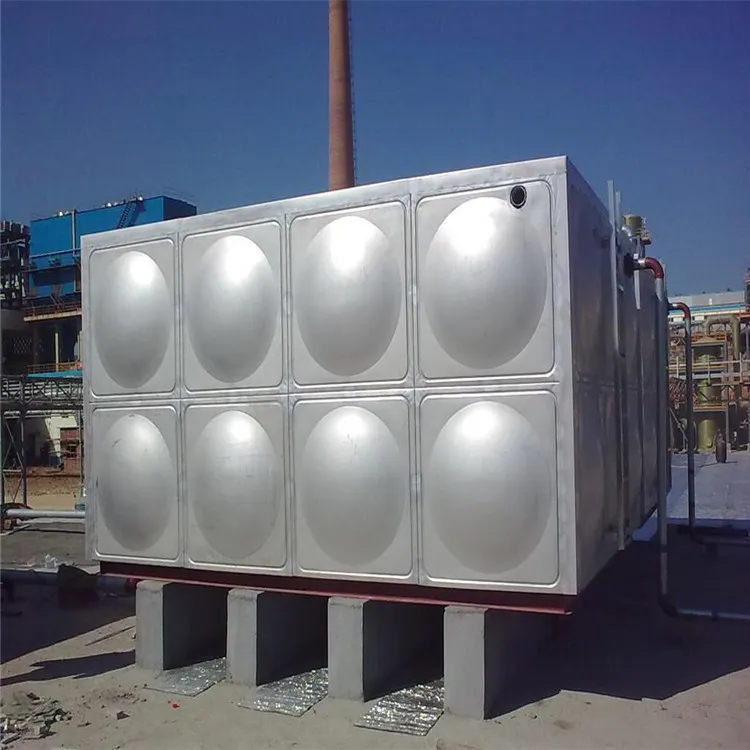loading...
- No. 9, Xingyuan South Street, Dongwaihuan Road, Zaoqiang County, Hengshui, Hebei, China
- admin@zjcomposites.com
- +86 15097380338
- Welcome to visit our website!
Advancements in Fiber Reinforced Polymer Rebar Technology for Construction Applications
The Advantages of Fiber Reinforced Polymer Rebar
In the ever-evolving field of construction and civil engineering, the use of advanced materials plays a critical role in enhancing durability, performance, and sustainability. One such innovation that has garnered significant attention in recent years is Fiber Reinforced Polymer (FRP) rebar. This material presents numerous advantages over traditional steel rebar, leading to its increasing incorporation into modern construction projects.
What is Fiber Reinforced Polymer Rebar?
FRP rebar is a composite material made by combining fibers—such as glass, carbon, or aramid—with a polymer matrix. This composite structure gives FRP rebar a unique set of mechanical properties, making it an attractive alternative to steel rebar. Unlike conventional materials, FRP rebar is non-corrosive, lightweight, and can be tailored to meet specific performance criteria.
Corrosion Resistance
One of the most significant advantages of FRP rebar is its exceptional resistance to corrosion. Traditional steel rebar is prone to rust when exposed to moisture and certain chemicals, leading to structural failures and increased maintenance costs. In contrast, FRP rebar does not corrode, making it an ideal choice for environments that are highly corrosive, such as marine structures and areas with high salt exposure. This durability translates into longer service life and reduced need for repairs, ultimately lowering lifecycle costs for construction projects.
Lightweight Nature
FRP rebar is much lighter than its steel counterparts. This reduced weight not only simplifies handling and transportation during construction but also contributes to lower overall project costs. By using FRP rebar, construction teams can speed up installation processes, leading to shorter project timelines. The lighter weight also means that less structural support is needed, which can further reduce costs and improve design flexibility.
High Strength-to-Weight Ratio
Despite its lightness, FRP rebar boasts a high strength-to-weight ratio, making it highly effective in reinforcing concrete structures. This quality enables designers and engineers to use less material while still achieving the desired structural integrity. This characteristic is particularly beneficial in applications where weight is a critical factor, such as in bridge construction or when retrofitting existing structures.
fiber reinforced polymer rebar

Low Thermal Conductivity
Another notable feature of FRP rebar is its low thermal conductivity. This property can be advantageous in environments where temperature fluctuations occur, as it minimizes the potential for thermal cracking in concrete. Additionally, because FRP does not transmit heat like steel, it can contribute to improved energy efficiency in buildings, making it an environmentally friendly choice.
Customization and Versatility
The versatility of FRP rebar is yet another factor that makes it attractive for various applications. Manufacturers can customize the fiber composition and polymer matrix to meet specific strength, stiffness, and bonding requirements. This customization allows engineers to design structures that meet their exact needs, whether it’s for bridges, parking garages, or other reinforced concrete applications.
Environmental Benefits
The production of FRP rebar often has a lower environmental impact compared to traditional steel rebar. The energy required to manufacture FRP materials is generally less than that needed for steel, and the longevity and low maintenance needs of FRP rebar contribute to reduced resource consumption over time. Given the growing emphasis on sustainable construction practices, the use of FRP rebar aligns well with modern environmental goals.
Challenges and Considerations
While FRP rebar has numerous advantages, it is essential to consider some challenges associated with its use. The initial cost of FRP rebar may be higher than that of steel, which can be a barrier for some projects. Additionally, designers and engineers must be familiar with the material’s properties and behavior under different loading conditions to ensure its effective application.
Conclusion
In conclusion, Fiber Reinforced Polymer rebar presents a multitude of advantages that make it a worthy consideration for modern construction practices. Its corrosion resistance, lightweight nature, high strength-to-weight ratio, low thermal conductivity, and environmental benefits position it as a superior alternative to traditional steel rebar in many applications. As the construction industry continues to innovate and evolve, FRP rebar is poised to play an increasingly vital role in building sustainable, durable, and efficient structures.
-
GRP Structures: The Future of Lightweight, High-Performance EngineeringNewsJun.20,2025
-
FRP Water Tank: High-Performance Storage for Corrosive and Clean Water SystemsNewsJun.20,2025
-
FRP Square Tube: The New Industry Standard for Chemical and Structural ApplicationsNewsJun.20,2025
-
FRP Pultruded Profiles: The Ultimate Choice for Lightweight Structural StrengthNewsJun.20,2025
-
FRP Handrails: The Safer, Smarter, and Stronger Choice for Modern InfrastructureNewsJun.20,2025
-
FRP Grating: The Smart Solution for Durable, Lightweight Industrial FlooringNewsJun.20,2025
-
Why Choose a Galvanized Water Tank for Your Storage NeedsNewsMay.21,2025
